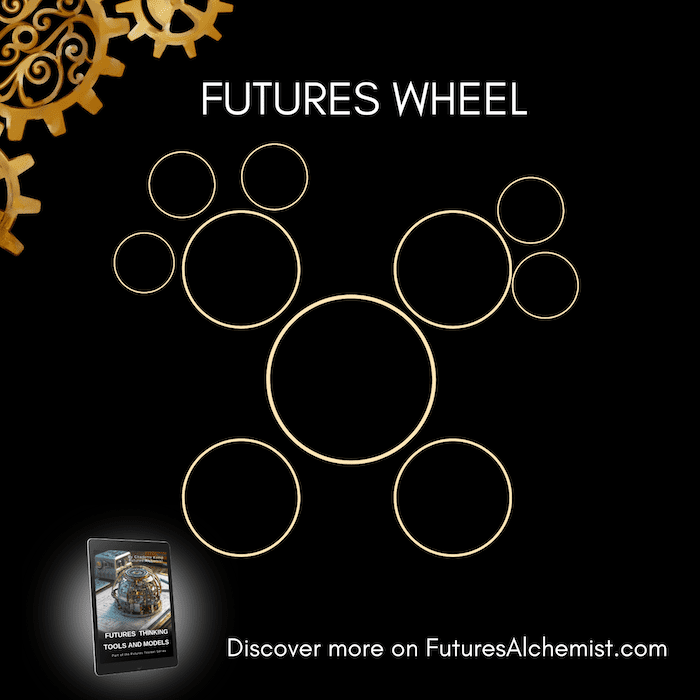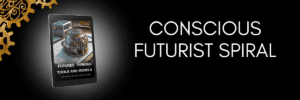
Introduction
The Futures Wheel is a visual method used to explore the first-, second-, and third-order consequences of a change, decision, or emerging issue. Structured like a mind map, the Futures Wheel helps individuals or groups trace possible impacts outward from a central idea in a logical, branching format.
Unlike linear cause-and-effect diagrams, the Futures Wheel emphasises ripple effects demonstrating how one change can influence multiple domains over time. It is especially useful in strategy, innovation, and policy planning where understanding cascading consequences is critical.
What It Is
The Futures Wheel is a radial diagram. At the centre is a proposed change or emerging signal, such as a new technology, policy decision, social movement, or external event.
From this centre, the wheel expands outward in layers:
- First-order consequences: Direct, immediate impacts or responses to the central change.
- Second-order consequences: Reactions to the first-order impacts, often indirect or unexpected.
- Third-order and beyond: Deeper ripple effects, long-range implications, or feedback loops.
Each layer moves the discussion from what is obvious and immediate to what is emergent and complex.
How It Works
To facilitate a Futures Wheel session:
- Start with the central idea. Place the change, event, or decision at the centre of the diagram.
- Identify first-order effects. Ask what happens immediately or directly as a result? Branch these out from the centre.
- Explore second-order effects. For each first-order consequence, ask: What happens next? What are the knock-on effects?
- Continue to third-order and beyond. Dive as deep as time or relevance allows.
- Analyse the patterns. Once the wheel is populated, examine it for clusters, feedback loops, contradictions, and opportunities.
This tool is particularly effective in group settings. It surfaces a variety of perspectives and stimulates both creative and critical thinking.
Why It Works
The Futures Wheel is powerful because it mirrors how real-world change unfolds: not in a straight line, but in complex, interacting waves. It makes systemic thinking visible and helps avoid the trap of short-term or single-issue forecasting.
Key benefits include:
- Clarity: Makes complex cause-effect relationships easier to understand.
- Comprehensiveness: Encourages holistic thinking across domains (economic, social, technological, etc.).
- Anticipation: Reveals unintended consequences, both risks and opportunities.
- Engagement: Facilitates collaborative discussion by providing a shared visual language.
It also balances optimism and caution. It shows not just what we hope will happen, but also what could go wrong, morph, or multiply in unforeseen ways.
The Ridiculous
The Futures Wheel can spin out into some very unexpected ideas. Resist the temptation to ‘make it plausible’ and restrict these ideas. It is often in grappling with the bizarre that we find useful insights for what is more mundane.
When to Use It
The Futures Wheel is ideal:
- When introducing or responding to a significant change.
- During scenario planning, to develop implications.
- As a risk analysis or stress-testing tool.
- In strategic conversations to challenge linear thinking.
- In innovation workshops to explore consequences of new products or services.
It works well with diverse teams and stakeholder groups because it allows everyone to contribute their lens to the conversation.
In Summary
The Futures Wheel is one of the most enduring tools in strategic foresight because it brings complexity to light without requiring overly complex inputs. It supports layered thinking and empowers teams to make more informed, resilient, and creative decisions.
At a time when every choice can ripple through unpredictable environments, the Futures Wheel reminds us that futures thinking is not just about what we know now, but about exploring what might evolve from what we do today.
Origin
Jerome C. Glenn in the early 1970s




